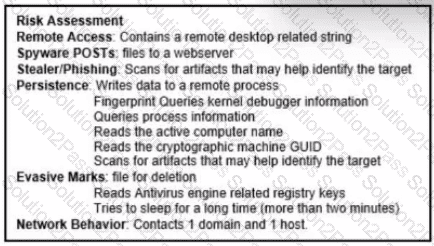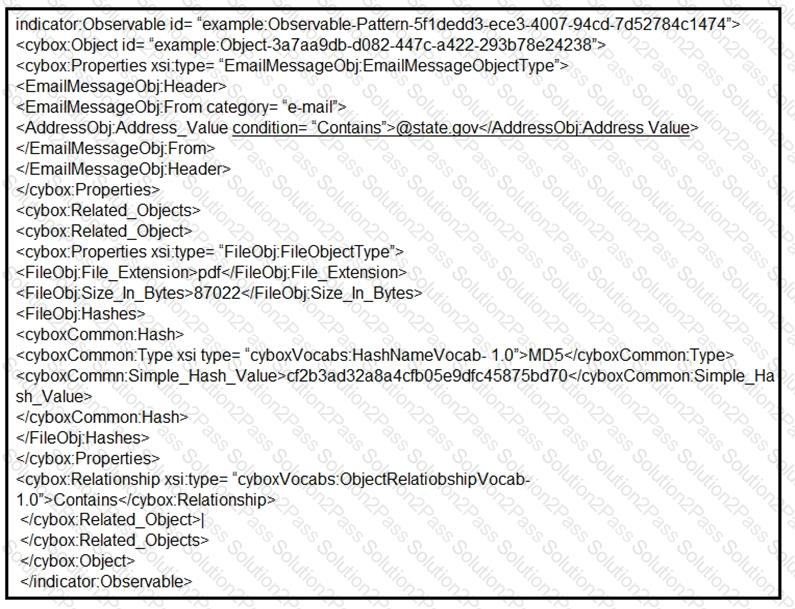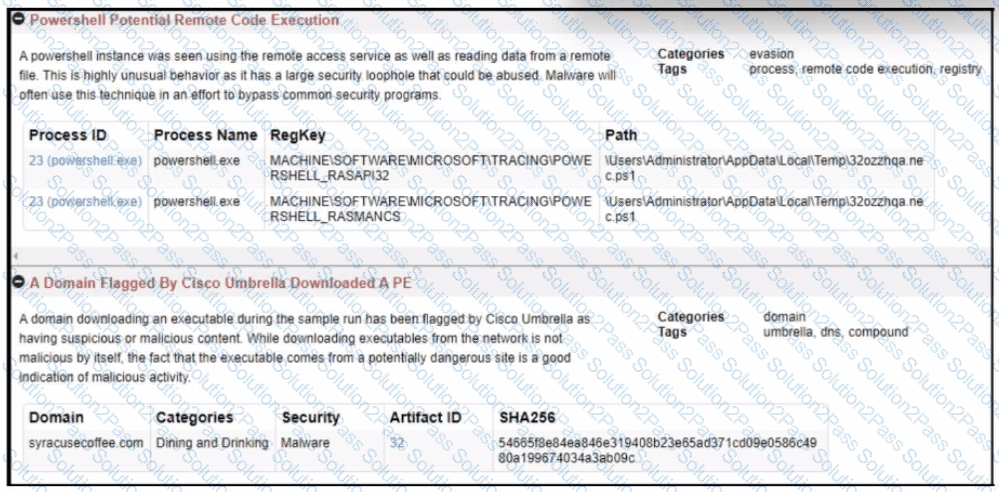300-215 Cisco Conducting Forensic Analysis and Incident Response Using Cisco CyberOps Technologies (CBRFIR) Free Practice Exam Questions (2025 Updated)
Prepare effectively for your Cisco 300-215 Conducting Forensic Analysis and Incident Response Using Cisco CyberOps Technologies (CBRFIR) certification with our extensive collection of free, high-quality practice questions. Each question is designed to mirror the actual exam format and objectives, complete with comprehensive answers and detailed explanations. Our materials are regularly updated for 2025, ensuring you have the most current resources to build confidence and succeed on your first attempt.
An investigator is analyzing an attack in which malicious files were loaded on the network and were undetected. Several of the images received during the attack include repetitive patterns. Which anti-forensic technique was used?
What describes the first step in performing a forensic analysis of infrastructure network devices?
An organization fell victim to a ransomware attack that successfully infected 256 hosts within its network. In the aftermath of this incident, the organization's cybersecurity team must prepare a thorough root cause analysis report. This report aims to identify the primary factor or factors that led to the successful ransomware attack and to develop strategies for preventing similar incidents in the future. In this context, what should the cybersecurity engineer include in the root cause analysis report to demonstrate the underlying cause of the incident?
Over the last year, an organization’s HR department has accessed data from its legal department on the last day of each month to create a monthly activity report. An engineer is analyzing suspicious activity alerted by a threat intelligence platform that an authorized user in the HR department has accessed legal data daily for the last week. The engineer pulled the network data from the legal department’s shared folders and discovered above average-size data dumps. Which threat actor is implied from these artifacts?
An attacker embedded a macro within a word processing file opened by a user in an organization’s legal department. The attacker used this technique to gain access to confidential financial data. Which two recommendations should a security expert make to mitigate this type of attack? (Choose two.)
Refer to the exhibit.

What does the exhibit indicate?
A workstation uploads encrypted traffic to a known clean domain over TCP port 80. What type of attack is occurring, according to the MITRE ATT&CK matrix?
A cybersecurity analyst is analyzing a complex set of threat intelligence data from internal and external sources. Among the data, they discover a series of indicators, including patterns of unusual network traffic, a sudden increase in failed login attempts, and multiple instances of suspicious file access on the company's internal servers. Additionally, an external threat feed highlights that threat actors are actively targeting organizations in the same industry using ransomware. Which action should the analyst recommend?
Refer to the exhibit.

The application x-dosexec with hash 691c65e4fb1d19f82465df1d34ad51aaeceba14a78167262dc7b2840a6a6aa87 is reported as malicious and labeled as "Trojan.Generic" by the threat intelligence tool. What is considered an indicator of compromise?
A new zero-day vulnerability is discovered in the web application. Vulnerability does not require physical access and can be exploited remotely. Attackers are exploiting the new vulnerability by submitting a form with malicious content that grants them access to the server. After exploitation, attackers delete the log files to hide traces. Which two actions should the security engineer take next? (Choose two.)
Refer to the exhibit.

A security analyst notices unusual connections while monitoring traffic. What is the attack vector, and which action should be taken to prevent this type of event?
Refer to the exhibit.

Which two actions should be taken as a result of this information? (Choose two.)
An engineer is analyzing a DoS attack and notices that the perpetrator used a different IP address to hide their system IP address and avoid detection. Which anti-forensics technique did the perpetrator use?

